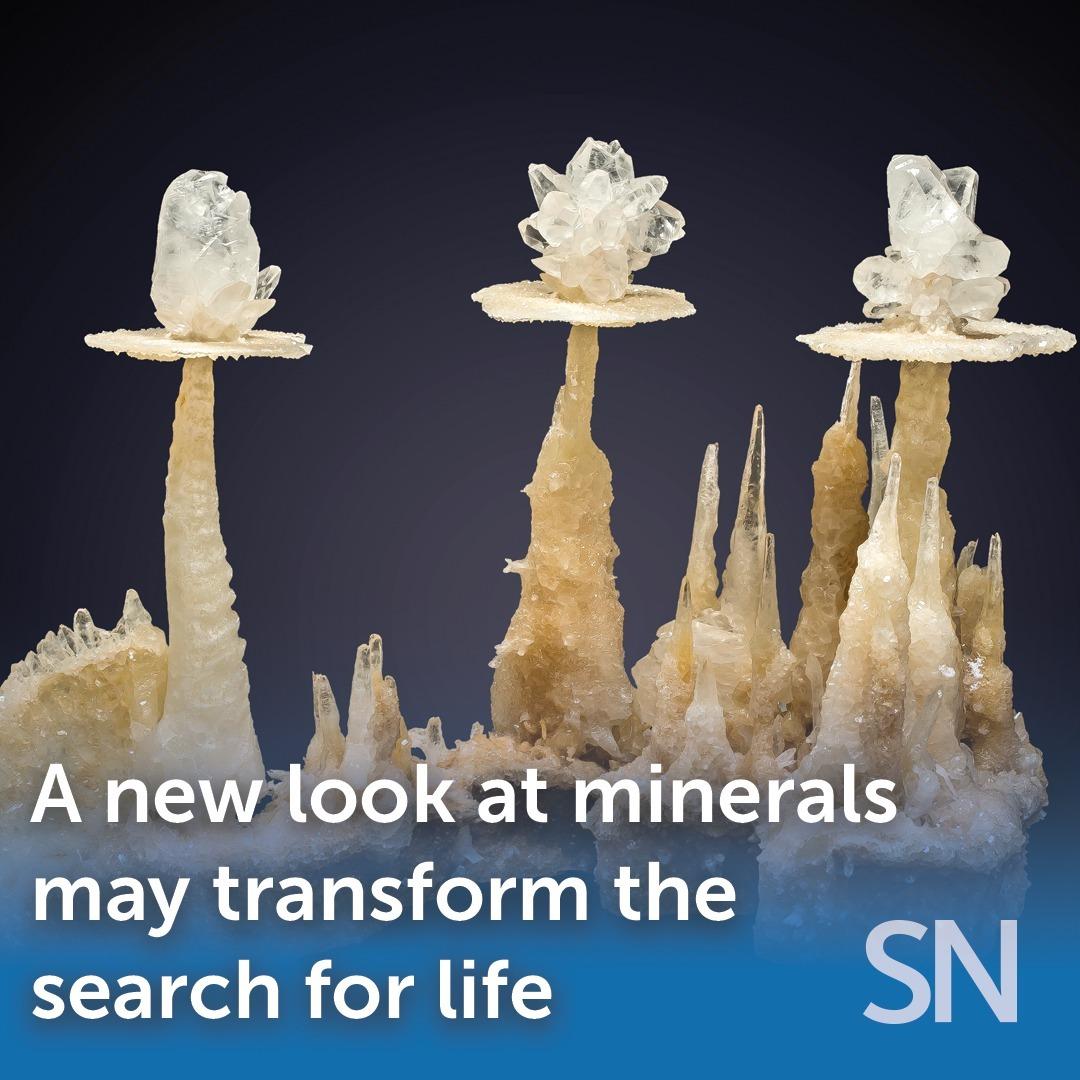For the first time, scientists have cataloged every different way that every known mineral can form (including calcite in the first photo, diamond in the second, azurite in the third and an opalized ammonite in the fourth) and put all of that information in one place. This collection of mineral origin stories hints that Earth could have harbored life earlier than previously thought, quantifies the importance of water as the most transformative ingredient in geology, and may change how researchers look for signs of life and water on other planets. Past mineral research has focused on the “what,” such as minerals’ structure and chemical makeup. The new research prioritizes the “how” by thinking about minerals as things that evolve out of the history of life, Earth and the solar system. Intriguingly, the research shows that half of all known mineral kinds form in ways that ought to have been possible on the newborn Earth. The implication: Of all the geologic environments that scientists have considered as potential crucibles for the beginning of life on Earth, most could have existed as early as 4.3 billion years ago. Life, therefore, may have formed almost as soon as Earth did, or at the very least, had more time to arise than scientists have thought. “That would be a very, very profound implication — that the potential for life is baked in at the very beginning of a planet,” says paleobiologist Zachary Adam.
(: Rob Lavinsky/Arkenstone)
#science #mineral #geology #diamond #calcite #azurite #planetaryscience
(: Rob Lavinsky/Arkenstone)
#science #mineral #geology #diamond #calcite #azurite #planetaryscience
For the first time, scientists have cataloged every different way that every known mineral can form (including calcite in the first photo, diamond in the second, azurite in the third and an opalized ammonite in the fourth) and put all of that information in one place. This collection of mineral origin stories hints that Earth could have harbored life earlier than previously thought, quantifies the importance of water as the most transformative ingredient in geology, and may change how researchers look for signs of life and water on other planets. Past mineral research has focused on the “what,” such as minerals’ structure and chemical makeup. The new research prioritizes the “how” by thinking about minerals as things that evolve out of the history of life, Earth and the solar system. Intriguingly, the research shows that half of all known mineral kinds form in ways that ought to have been possible on the newborn Earth. The implication: Of all the geologic environments that scientists have considered as potential crucibles for the beginning of life on Earth, most could have existed as early as 4.3 billion years ago. Life, therefore, may have formed almost as soon as Earth did, or at the very least, had more time to arise than scientists have thought. “That would be a very, very profound implication — that the potential for life is baked in at the very beginning of a planet,” says paleobiologist Zachary Adam.
(📸: Rob Lavinsky/Arkenstone)
#science #mineral #geology #diamond #calcite #azurite #planetaryscience
·1649 Views
